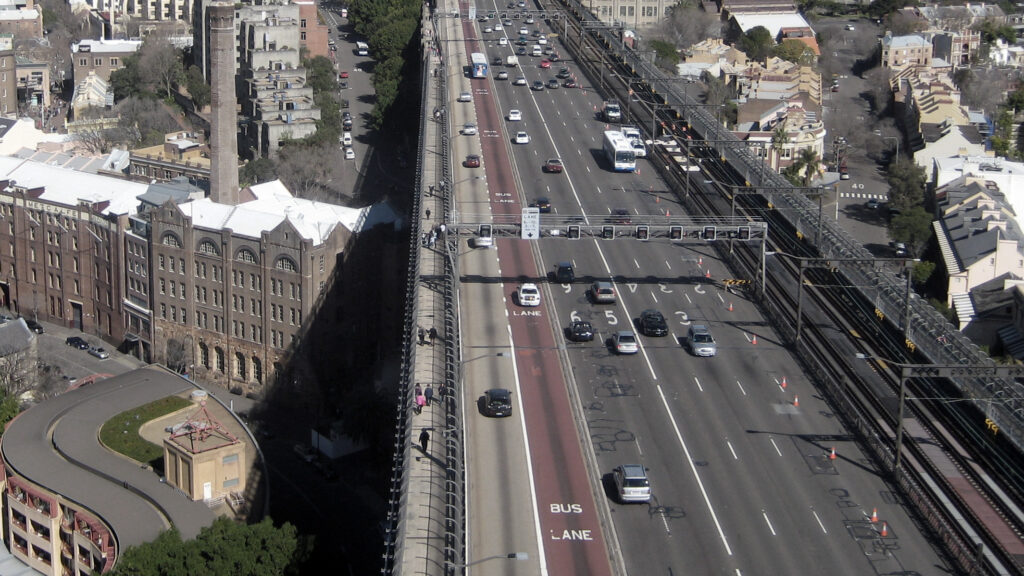
Infrastructure Australia’s narrow remit is distorting cities
Australia’s independent infrastructure advisory body is fixated on transport projects. That’s bad news for good urban planning.
When thinking about Infrastructure Australia— ‘the nation’s independent infrastructure advisor’—Maslow’s Hammer might well come to mind. Psychologist Abraham Maslow was thinking of cognitive biases when he wrote “I suppose it is tempting, if the only tool you have is a hammer, to treat everything as if it were a nail.”
Given Infrastructure Australia’s narrow charter, there’s a risk that this agency would see new infrastructure (rather than some other policy intervention) as essential for Australia’s major cities.
The rationale for the establishment of Infrastructure Australia in 2008 was that infrastructure investment decisions needed more rigour (“taking the politics out of major infrastructure projects’”). However, it’s now clear that Infrastructure Australia has failed to stop large projects being promoted without adequate analysis. This has led to calls for the agency to “do its job.”
However, I’d say the problems with Infrastructure Australia are more fundamental.
Flaws in Infrastructure Australia’s approach
Setting up Infrastructure Australia was part of what’s been called the “infrastructure turn.” This was a new focus on building infrastructure, particularly urban transport infrastructure, to promote economic growth. Integrated land use and transport planning in metropolitan areas was then significantly sidelined.
Subsequently, preparation of a project ‘business case’ emerged as the decision tool of choice for major transport investment. Fundamental to the business case approach is cost-benefit analysis (CBA), in which costs (construction and operating costs) and benefits (travel time savings, vehicle operating cost savings, crash cost savings and wider economic benefits) are estimated. If the dollar value of the benefits exceeds the costs, the project is considered justified.
While it may appear to be a sound approach, CBA has proved to be unreliable, largely due to cost overruns not forecast in the business case. Analysis of more than 800 major road projects in Europe and the US showed costs were underestimated in the business case by about a quarter on average, and this was not compensated for by underestimating benefits. In Australia, the business case cost estimate of about AU$2 billion for Brisbane’s Clem7 tunnel was about one-third below the final cost (AU$3.2 billion). Moreover, the estimated traffic volumes were about twice the actual numbers.
Why are cost and benefit forecasts so inaccurate?
Oxford University’s Bent Flyvbjerg—an authority on major infrastructure projects—believes a common cause of inaccurate cost and benefit forecasts is misrepresentation by proponents to present the best possible business case. These projects are usually popular with politicians and so there is an incentive for governments, contractors and consultants to find ways to justify a project. Economist Peter Martin writes of the “fake economics cookbook” that is used to “make bad transport projects look good.”
For road projects, there is also evidence that travel time savings calculated by traffic models should not be included in the expected benefits from the projects. These models assume that motorists will minimise ‘generalised travel cost’ (a combination of money cost and the dollar value of time). However, in the longer run, any time saved on a new section of road is used to travel further.
What needs to be done?
In the first place, the ‘tail’ of transport infrastructure development should not ‘wag the dog’ of comprehensive metropolitan strategic planning.
A best practice approach to metropolitan planning requires that transport infrastructure and land use planning work together to achieve the desired future for the city. And community deliberation should determine this desired future.
Infrastructure Australia’s influence in urban transport development is part of the shift in which land use planning has been significantly “eclipsed” by transport infrastructure development.
In the 1990s, the Commonwealth provided grants to cities under the Building Better Cities program, which aimed to “promote improvements in the efficiency, equity and sustainability of Australian cities and to increase their capacity to meet a range of social, economic and environmental objectives.” Recipients of these grants had to demonstrate that the full range of objectives would be promoted.
There is a need to return to this type of comprehensive approach.
Because of its narrow focus, Infrastructure Australia does not have a constructive role to play in planning Australian cities and its charter should be amended to reflect this.
_
Brian Feeney is an urban planner and independent researcher.


